8 Essential Mediterranean herbs and how to cook with them

Rosemary, Thyme, Basil & co. are the stars of Mediterranean cooking. This guide will teach you how to use them, combine their flavors, and master simple cutting techniques.
The Role of Herbs in Mediterranean Cooking
Herbs are at the heart of Mediterranean cuisine, especially in the South of France, where they add depth and flavor to even the simplest dishes. Herbs like thyme, rosemary or oregano do not only pair incredibly well with healthy ingredients like fresh vegetables, olive oil and seafood, they are also packed with health benefits, especially when consumed on a daily basis.
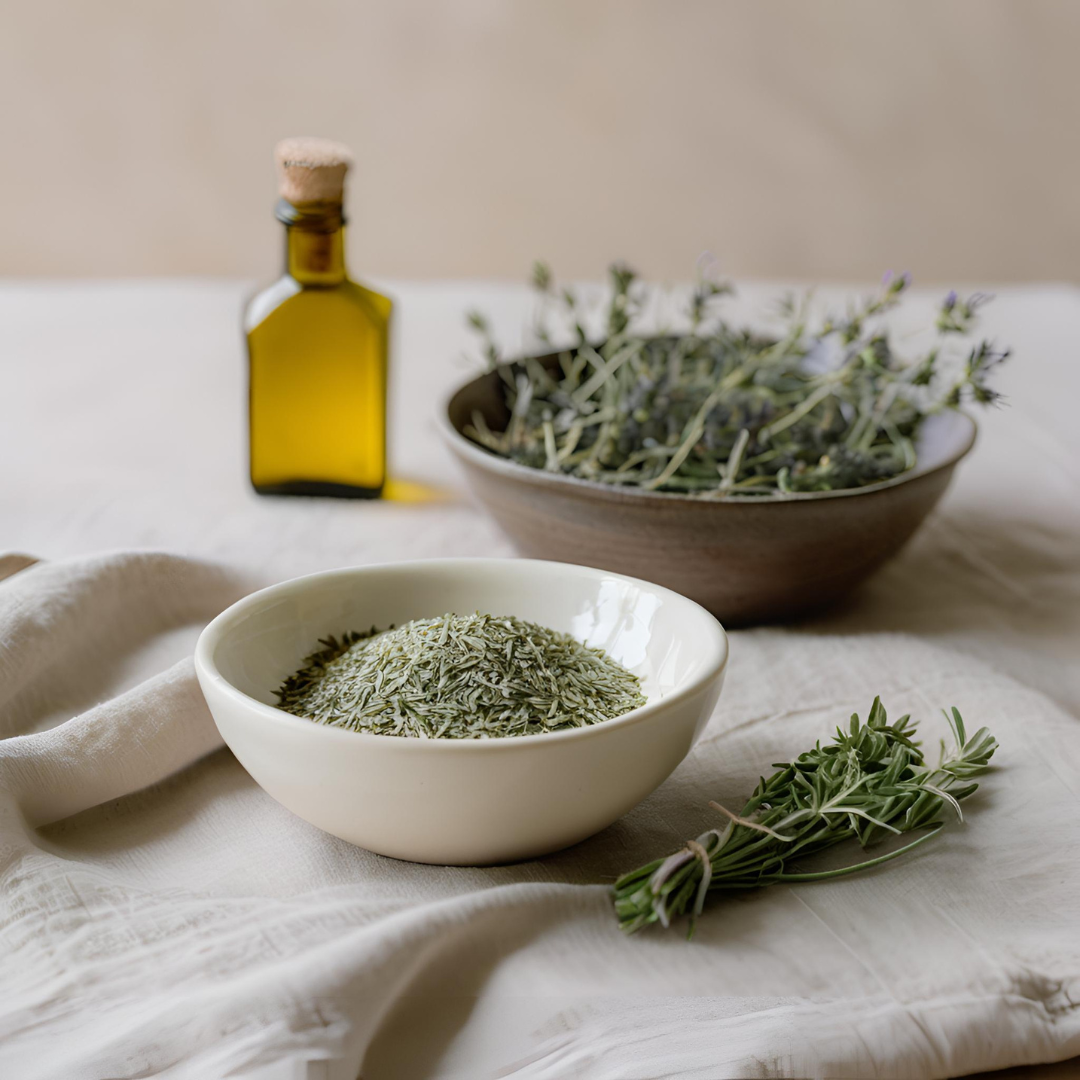
Is it better to use herb blends than Herbs individually?
Not necessarily. While Herbes de Provence is the easier option, using individual herbs lets you create more tailored and nuanced flavors.
Should herbs always be used fresh?
Fresh herbs bring a more delicate and aromatic touch to dishes, perfect for finishing salads, sauces, or soups. Dried herbs, on the other hand, have a more concentrated flavor and work better for slow-cooked meals like stews or roasts.
How do I conserve fresh herbs bought at the market?
Store fresh herbs in the fridge by trimming the ends and placing them in a jar of water like a bouquet. This way, they stay fresh for about 5-7 days, compared to just 1-2 days if left unprotected.
1: Basil
Basil is one of the most known Mediterranean herbs, appreciated for its fresh, slightly sweet aroma and vibrant green leaves. It thrives in warm, sunny spots and needs well-drained soil to flourish.
Store-bought basil is often overcrowded in small pots, which can stress the plant and lead to a quick decline. To help it thrive, transfer it to a larger pot with fresh, well-draining soil to give the roots more space. Water the plant regularly to keep the soil moist but avoid overwatering, as basil dislikes soggy roots. When harvesting leaves, always cut above a pair of leaves, leaving foliage below. This ensures the remaining leaves continue to nourish the plant rather than letting leftover stems drain its energy.
How to combine Basil
Fresh basil is best enjoyed with ingredients that complement its sweet and aromatic flavor. It pairs beautifully with tomatoes, garlic, mozzarella, pine nuts, and olive oil. It also works well with lemon, balsamic vinegar, and Parmesan, adding a fresh, vibrant note to simple ingredients.
How to cut Basil
For salads or garnishes, whole leaves or a rough tear give a rustic touch and preserve its freshness. For finer preparations, you can use the chiffonade technique—stacking leaves, rolling them into a cigar shape, and slicing thinly for elegant ribbons of basil. Always avoid bruising the leaves by using a sharp knife or tearing gently to maintain its flavor and texture.
Some Mediterranean Recipe Ideas with Basil
- Fresh Pesto with Fresh Basil, Garlic, pine nuts and Parmesan
- Tomato Basil Bruschetta with toasted bread, diced tomatoes, fresh basil, garlic, and olive oil.
- Herbed Marinade with chopped basil, olive oil, garlic and lemon
2: Oregano
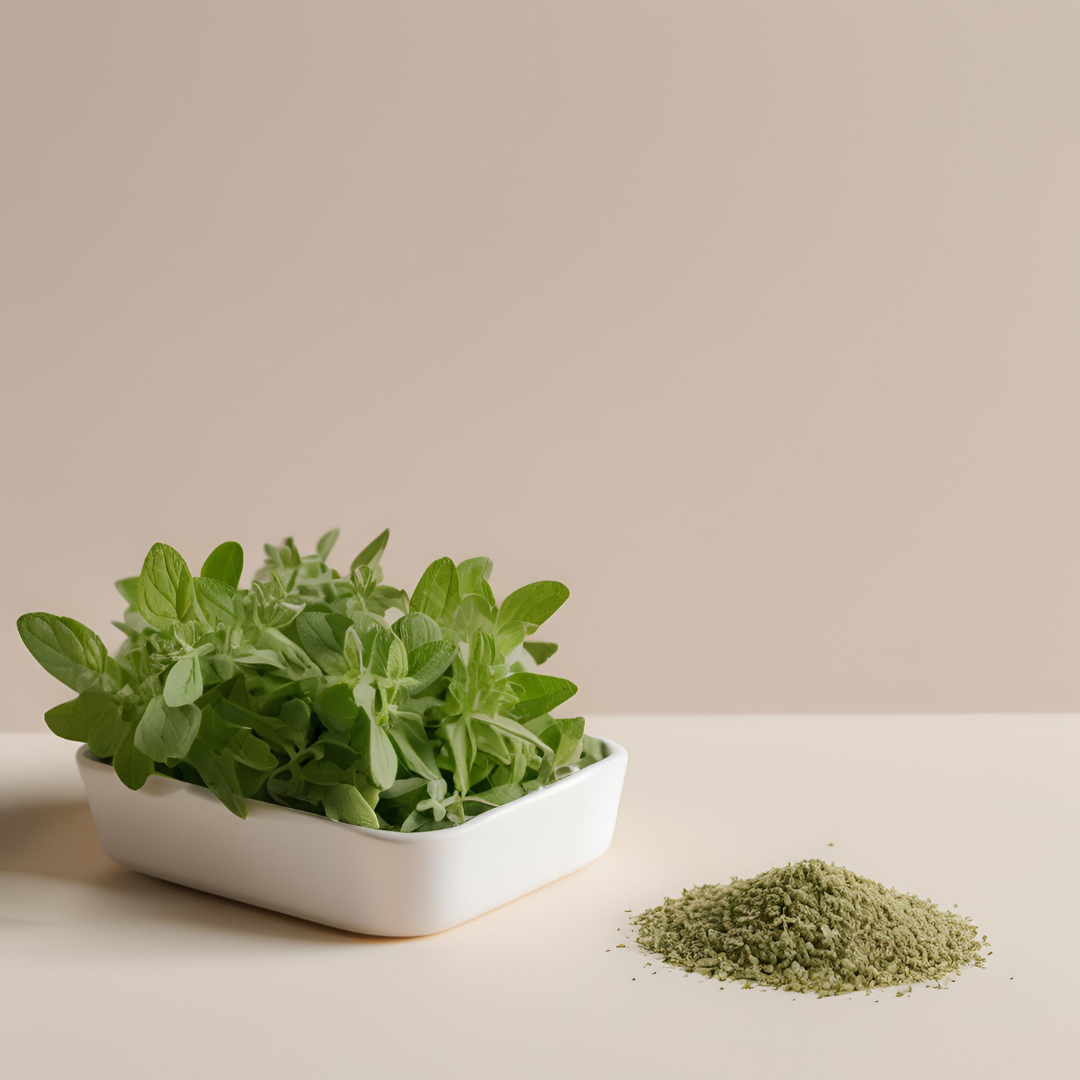
Oregano is a robust and aromatic herb known for its slightly peppery, earthy flavor. It thrives in sunny, dry conditions and is a hardy plant that requires minimal maintenance, making it a favorite for gardens in the Mediterranean region.
How to combine Oregano
Oregano pairs well with tomatoes, garlic, olive oil, and red onion making it a must-have for Mediterranean sauces. It’s also a natural complement to feta, lemon, and olives and adds depth to Mediterranean salads and marinades. Dried oregano is often more concentrated in flavor than fresh and works well for pizza, roasted vegetables, or slow-cooked dishes. Fresh oregano brings a brighter, more delicate taste to salads, dressings, or as a garnish for soups and grilled meats.
Some Mediterranean Recipe Ideas with Oregano
- Greek Salad with fresh oregano, cucumbers, tomatoes, red onions, feta, and olives.
- Homemade Tomato Sauce, simmered with garlic, olive oil, and dried oregano.
- Herb-Crusted Lamb, combining dried oregano with rosemary, lemon, and olive oil.
- Roasted Vegetables tossed with olive oil, garlic, and dried oregano before baking.
3: Thyme
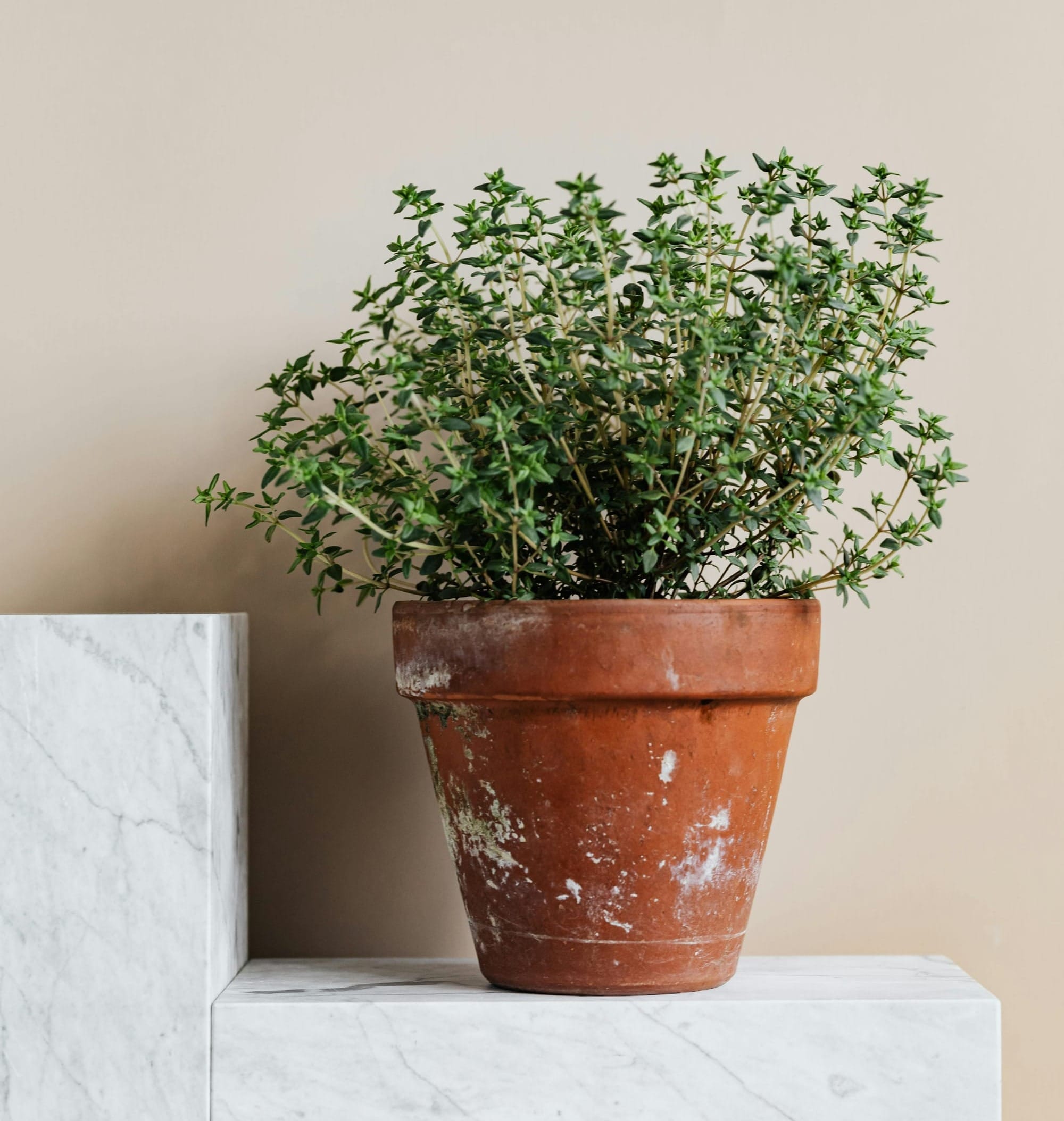
Thyme is a fragrant and versatile herb, widely used in Mediterranean cuisine for its earthy, slightly minty flavor. It thrives in sunny, dry conditions and requires little maintenance, making it a favorite for home gardens.
How to combine thyme
Thyme’s subtle, earthy flavor pairs beautifully with garlic, lemon, olive oil, and white wine, making it perfect for Mediterranean roasted meats and vegetables. It also complements tomatoes, onions, and cheeses, adding depth to stews, soups, and gratins. Fresh thyme has a delicate flavor and is ideal for finishing dishes, while dried thyme is more concentrated and works best for slow-cooked recipes like casseroles, sauces, and marinades.
How to cut thyme
To use fresh thyme, simply strip the leaves from the woody stems by running your fingers down the stem in the opposite direction of growth. The leaves can be used whole for roasting or roughly chopped for marinades and dressings. You can also use whole sprigs in soups or stews and remove them before serving. For dried thyme, crumble it between your fingers to release its aroma before adding it to dishes.
Some Mediterranean Recipe Ideas with Thyme
- Roasted Chicken with Lemon and Thyme, stuffed with fresh thyme sprigs
- Herbed Crispy Potatoes, tossed with olive oil, garlic, and fresh thyme leaves
- Vegetable Soup seasoned with dried thyme
- Grilled Fish Marinade, made with fresh thyme, olive oil, lemon juice, and garlic.
- Thyme-Infused Honey, gently heated with fresh thyme sprigs,
4: Rosemary
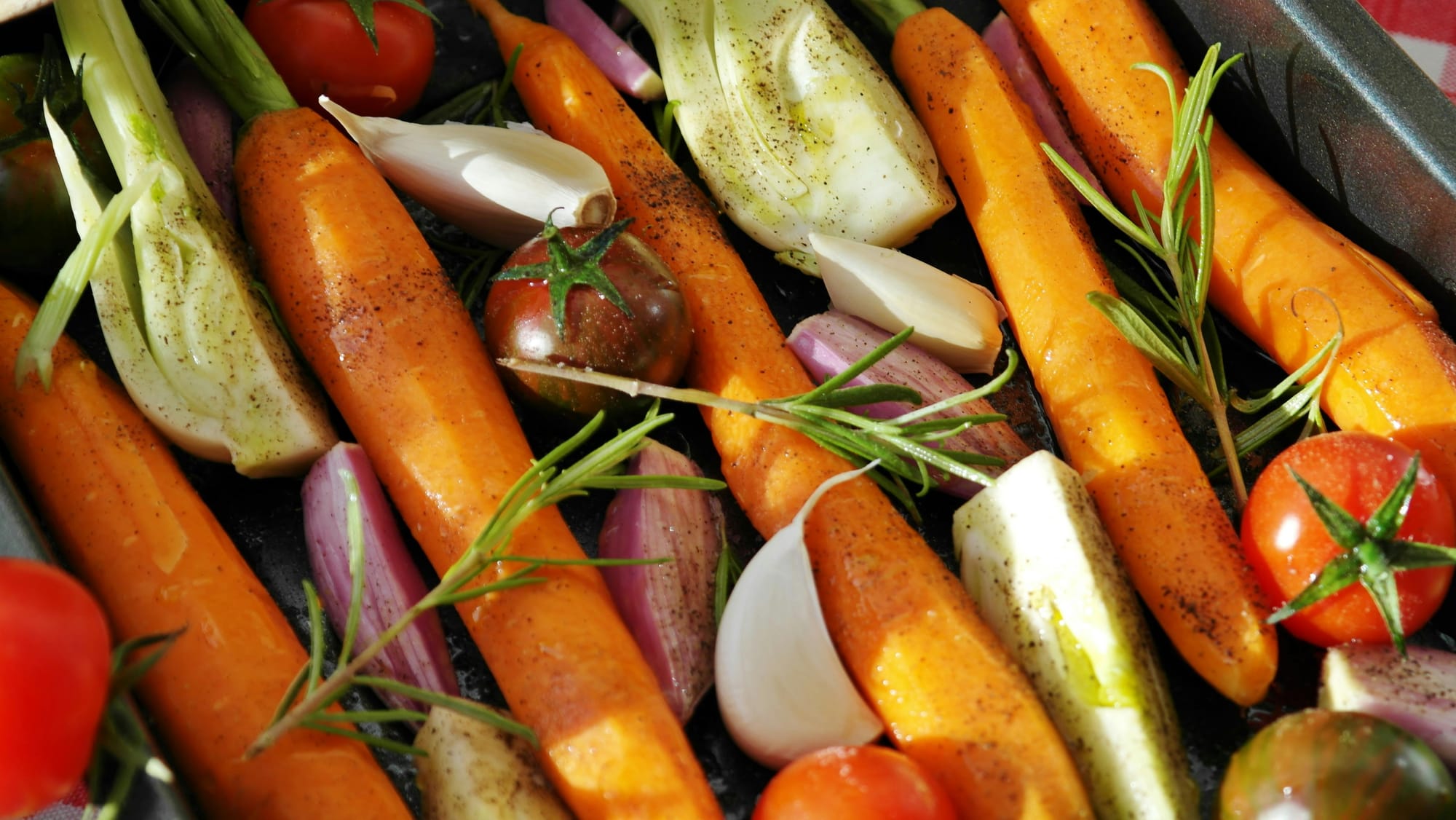
Rosemary is one of the most distinctive Mediterranean herbs, with its needle-like leaves and intense, piney aroma. Native to the rocky coasts of the Mediterranean, rosemary is a robust plant, requiring little water and care and can easily be grown in a garden or in pots.
How to combine rosemary
Rosemary’s bold and earthy flavor pairs wonderfully with garlic, lemon, olive oil, and red wine, making it a natural match for roasted meats, potatoes, and hearty vegetables. It also complements flavors like thyme, parsley, and bay leaves in soups, stews, and marinades.
How to harvest rosemary
To harvest rosemary, snip sprigs from the plant, ideally from the top, to encourage bushier growth. Strip the leaves from the woody stems by running your fingers down the stalk in the opposite direction of growth. Use the leaves whole for roasting or finely chop them for marinades, rubs, or sauces.
Some Mediterranean Recipe Ideas with Rosemary
- Rosemary Roasted Potatoes, tossed with olive oil, garlic, and fresh rosemary leaves.
- Rosemary Focaccia, topped with fresh rosemary leaves and sea salt for a classic bread.
- Grilled Vegetables, marinated with olive oil, lemon juice, and rosemary sprigs.
5: Sage

Known for its earthy and slightly peppery taste, sage is a beloved herb in Mediterranean and European cuisines. Its soft, velvety leaves add warmth and depth to a variety of dishes, especially those with hearty or buttery flavors.
How to combine sage
Sage is especially well-suited for rich, savory recipes. Its bold flavor complements ingredients like butter, garlic, onions, and lemon, making it perfect for enhancing poultry, pork, and creamy pasta sauces. Root vegetables, potatoes, and cheeses also pair wonderfully with sage, while fried sage leaves make an elegant garnish. Fresh sage shines in quick preparations like sautéed dishes, while dried sage is better suited for slow-cooked recipes where its flavor can infuse over time.
How to cut sage
To harvest, snip individual leaves or small clusters near the base of the stem. Use the leaves whole for frying or as a garnish, chop them finely for marinades and sauces, or crush dried sage for an even distribution of flavor.
Some Mediterranean Recipe Ideas with Sage
- Brown Butter Sage Sauce, drizzled over ravioli or gnocchi
- Sage and Lemon Roasted Chicken, with fresh sage tucked under the skin
- Stuffing with Sage, combining dried sage, onions, and bread
6: Bay Leaf
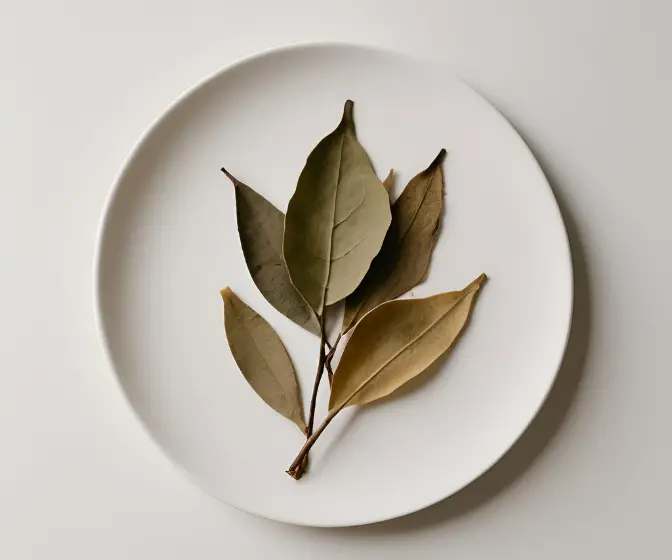
Bay leaves, with their subtle, slightly floral aroma, are a foundational herb in Mediterranean and European cooking. Derived from the bay laurel tree, these sturdy, dark green leaves have been used in kitchens for centuries to flavor soups, stews, and sauces.
How to combine bay leaves
Bay leaves are a versatile herb that works well with a variety of flavors. Their subtle bitterness and earthy aroma complement hearty dishes like soups, stews, and braises. They pair particularly well with tomatoes, garlic, onions, wine, and olive oil, creating a savory base for Mediterranean recipes. Bay leaves are best used dried, as their flavor intensifies over time.
How many bay leaves do I need to add?
One or two leaves are usually enough to flavor a pot of soup or stew. For even distribution of flavor, gently crush the leaves with your fingers before adding them. Always remove the leaves before serving, as their texture is not suitable for eating.
Some Mediterranean Recipe Ideas with Bay Leaves
- Vegetable Stock, flavored with bay leaves, carrots, celery, and leeks as a base for soups and risottos.
- Bouquet Garni, a traditional herb bundle with bay leaves, thyme, and parsley to infuse broths and sauces.
- Bay Leaf-Infused Rice, simmered with a bay leaf for a subtle aromatic boost.
7: Marjoram
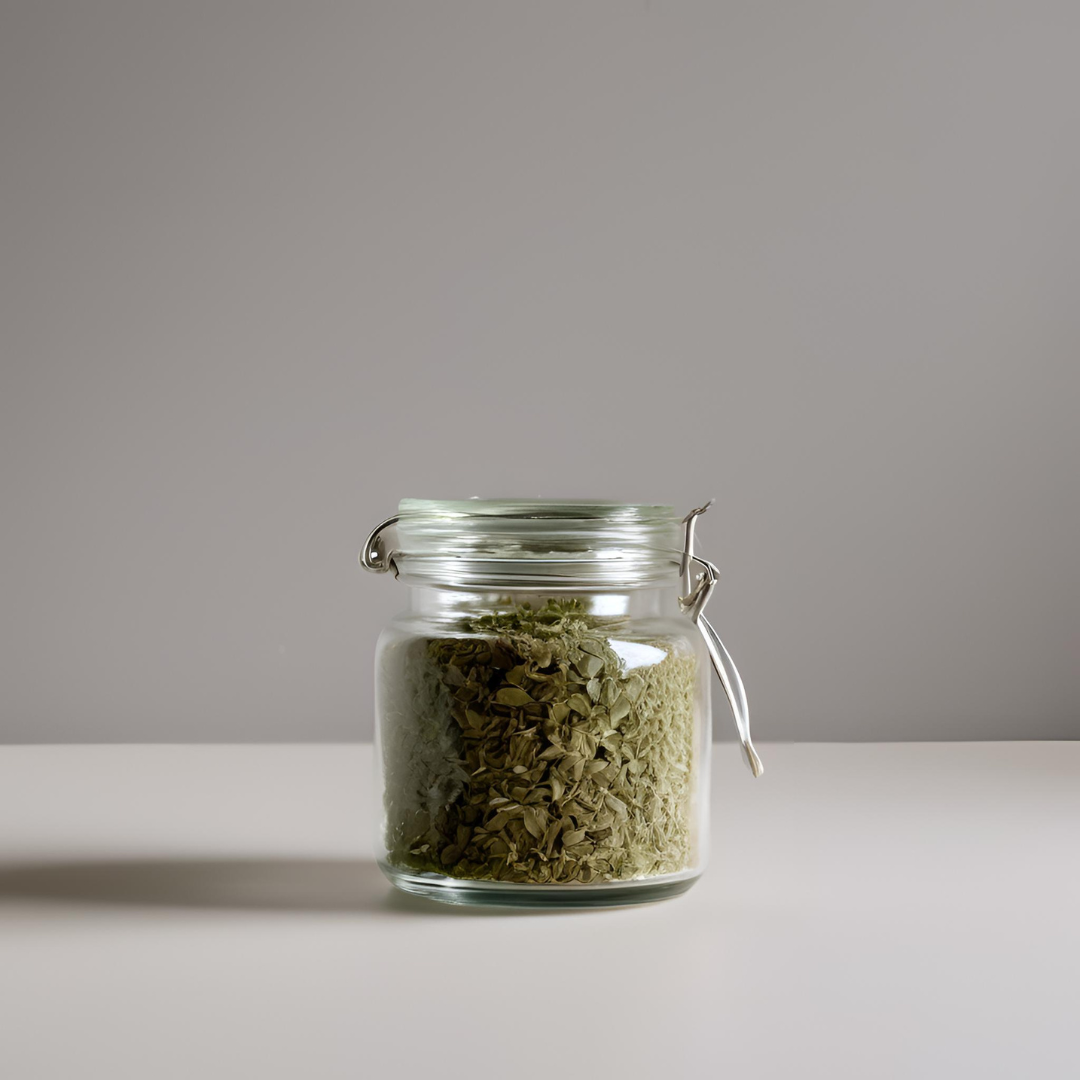
Marjoram is a delicate, aromatic herb with a mild, slightly sweet, and citrusy flavor. A close relative of oregano, it is often used to add a subtle yet distinctive taste to a variety of dishes.
How to combine marjoram
Marjoram pairs wonderfully with chicken, fish, and vegetables but also with garlic, onions, and lemon. It complements tomato-based dishes, olive oil, and mild cheeses and works well with other herbs like thyme and parsley. Fresh marjoram adds a floral note when sprinkled over dishes at the end of cooking, while dried marjoram is perfect for slow-cooked recipes.
How to harvest marjoram
To harvest fresh marjoram, snip the tender stems and strip the leaves off for use in cooking. The leaves can be added whole to salads or chopped finely for marinades and sauces. Dried marjoram, which has a more concentrated flavor, is best crumbled directly into dishes to release its aroma.
Some Mediterranean Recipe Ideas with Marjoram
- Grilled Fish Marinade, made with fresh marjoram, lemon juice, olive oil, and garlic.
- Tomato and Marjoram Soup, using dried marjoram
- Herb-Roasted Chicken, rubbed with a mix of fresh marjoram, thyme, and olive oil.
8: Savory
Savory is a lesser-known but essential Mediterranean herb with a peppery, slightly spicy flavor that falls somewhere between thyme and oregano.
How to combine savory
Savory pairs particularly well with beans, lentils, and other legumes, as it helps reduce their heaviness and adds a subtle spiciness. It also complements garlic, onions, olive oil, and tomatoes, making it an excellent addition to Mediterranean stews and sauces.
How to harvest savory
Cut the sprigs and strip the leaves from the stems for use in cooking. The leaves can be added whole to marinades or chopped for seasoning meats and vegetables. Dried savory can be crumbled into dishes to release its peppery aroma and is especially useful in spice blends like Herbes de Provence.
Some Mediterranean Recipe Ideas with Savory
- Savory-Infused Vinegar, steeping fresh sprigs in white vinegar for a tangy dressing base.
- Bean Salad, dressed with olive oil, lemon, and a sprinkle of dried savory
